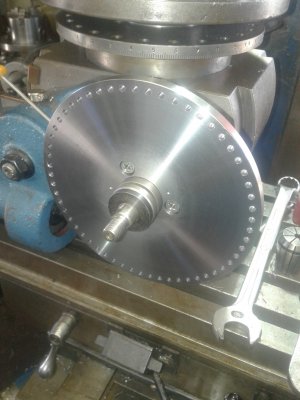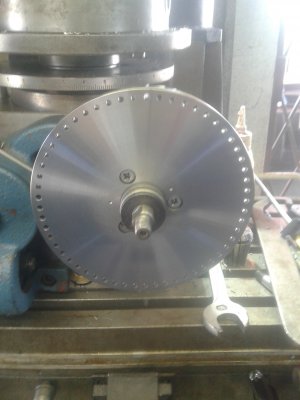@Suzuki4evr
Hi Michael, Sure, lets go thru it!
@Lo-Fi provides one method above that works great.....it's just not the way I think....
Note, that we could convert things to decimals along the way, but at the end we'd need to turn an ugly decimal number back into a fraction.
It's easier to just leave it as fractions thru out.
You want to cut a 57-tooth gear.
Every tooth therefore needs to be 360 divided by 57 or 360/57 degrees apart.
You said earlier that you have a 40:1 worm gear ratio in the dividing head.
So 40 turns of the input handle gives you one turn of the output shaft or 360 degrees.
Therefore each single turn of the handle gives you (360/40) degrees rotation of the output shaft.
Now we can calculate how many handle turns to get the required output rotation.
We need to divide the angle we want (angle for each tooth) by the angle we get from one full turn.
That will give us the number of turns of the handle for each tooth.
That's 360/57 divided by 360/40.
By the rules of dividing fractions we can "invert and multiply".
So it becomes 360/57 * 40/360.
Now we can cancel the two 360's (since we have one on the top and one on the bottom)
that leaves: 1/57 * 40/1 which is simply 40/57.
That tells us that the final answer is 40 holes on a 57-hole plate.
This is all available in tables. However knowing it from "first principles" allows you to work it out when you have a goofy worm ratio, or to work backwards to see what plate you'd need to make what gear, even if it's not in the table.
If anything is unclear, let me know.
-brino




 .
.